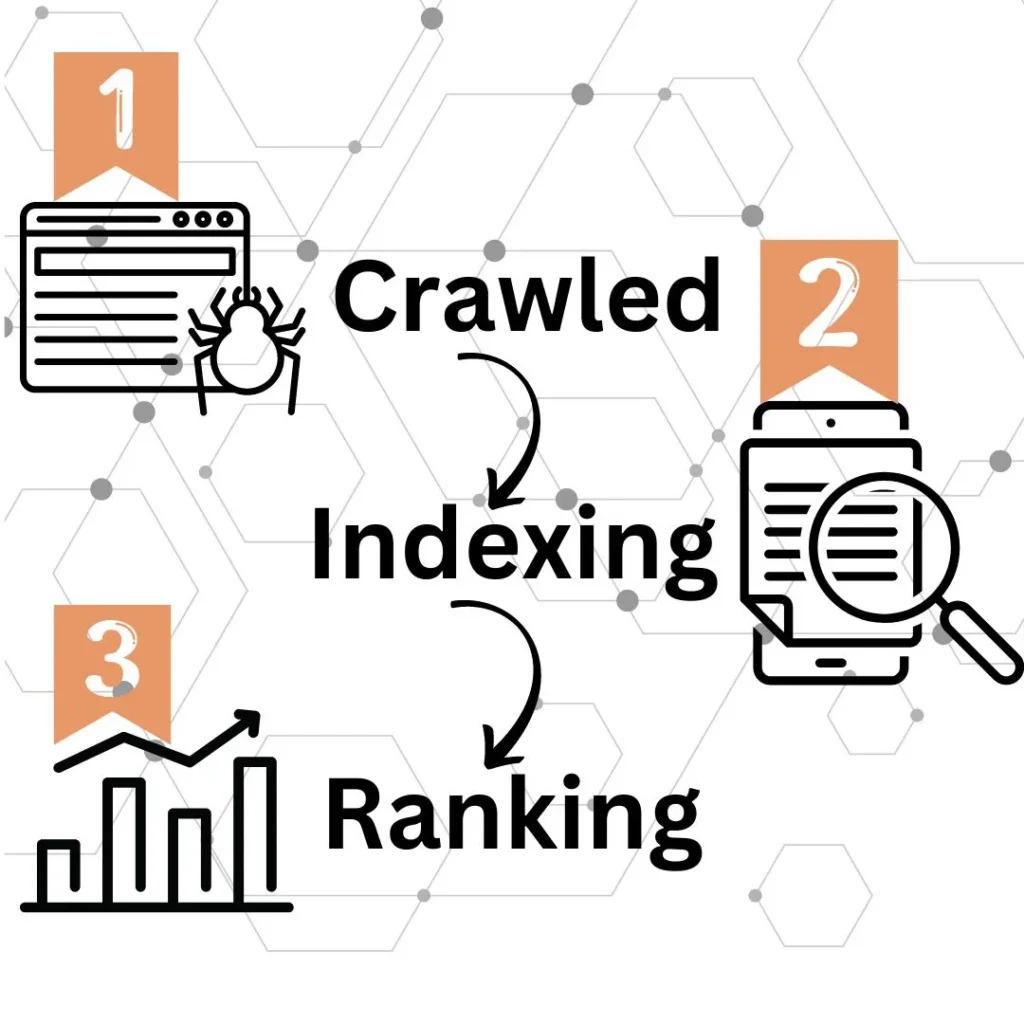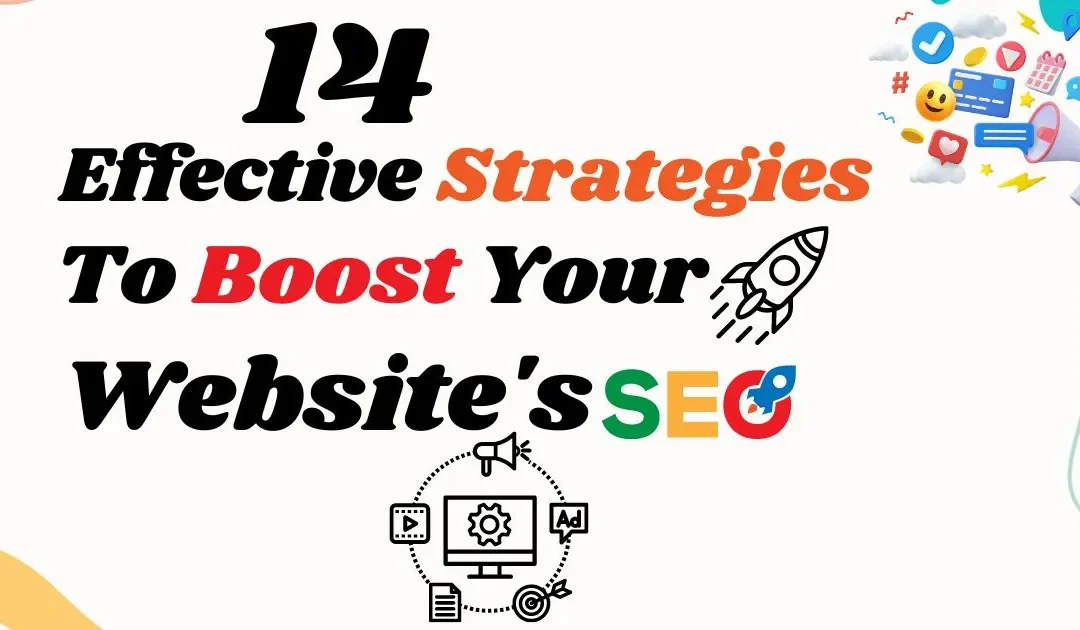14 Effective Strategies to Boost Your Website’s SEO
Maximize your website’s visibility with these 14 proven SEO strategies. Enhance crawl ability, optimize for mobile, and build authority.
Enhance your website’s visibility and traffic while outpacing your competitors with these reliable SEO techniques.
Put an end to the stress of ranking changes with every Google update. Consequently, learn how to develop a sustainable SEO plan that remains successful despite algorithm changes. In this regard, this detailed guide provides you with 14 impactful strategies to optimize your website. Moreover, you’ll discover how to:
1. Enhance Crawlability and Indexability
Ensuring that search engines can find and understand your content is crucial. Therefore, start by creating an XML sitemap, which acts as a roadmap for search engines to navigate your site. Additionally, make sure your sitemap includes all important pages and is regularly updated.

Tip: Submit your XML sitemap to Google Search Console to help search engines discover new or updated content faster.
2. Optimize Your Robots.txt File
Your robots.txt file, therefore, directs search engines on which pages they can and cannot crawl. Consequently, proper configuration of this file is essential to avoid blocking important pages or, alternatively, allowing access to irrelevant ones.

Tip: Use Google Search Console to test your robots.txt file and ensure it’s correctly set up.
3. Improve User Experience
Improving the user experience (UX) is vital for SEO. Therefore, optimize images by reducing their file size for quicker load times, and additionally, include descriptive alt text for better accessibility. Furthermore, reduce the number of HTTP queries on your website, and in addition, activate browser caching to make it faster. Lastly, use structured data markup to make it easier for search engines to understand your content.

Tip: Use Google’s PageSpeed Insights to find areas where you can boost your website’s speed and user experience.
4. Implement Mobile-Friendly Design
With more people browsing the internet via mobile devices, consequently, a mobile-friendly website is crucial. Therefore, use a responsive design to ensure your website works effectively on different screen sizes. Additionally, check your site’s mobile usability with Google’s Mobile-Friendly Test tool.

Tip: Focus on loading speed and simple navigation for mobile users to enhance satisfaction and search rankings.
5. Build Authority and Trust
Search engines favor websites that exude authority and trustworthiness. Therefore, fix broken links to keep your site structure intact and, in turn, signal to Google that your site is well-maintained. Additionally, develop high-quality, relevant content that not only offers value to your audience but also attracts backlinks from reputable sources.

Tip: Regularly check your website for broken links and use tools like Ahrefs or SEMrush to manage your backlink profile.
6. Optimize for Voice Search as a SEO Strategies
As voice search grows in popularity, optimizing for it can offer a competitive advantage. Therefore, focus on long-tail keywords and conversational queries, since people tend to use natural language when using voice assistants.

Tip: Create FAQ pages that address common questions in a conversational tone to capture voice search traffic.
7. Use Secure HTTPS Protocol
Security is important for both users and search engines. Make sure your website uses HTTPS to encrypt data and provide a secure browsing experience. HTTPS is a known ranking factor for Google, so switching to a secure protocol can positively impact your SEO.

Tip: Obtain an SSL certificate from a reputable provider and implement it across your entire site.
8. Leverage Social Media as a SEO Strategies
Social media can, in fact, amplify your content and drive traffic to your website. Therefore, share your blog posts, infographics, and other content on platforms like Facebook, Twitter, and LinkedIn to not only increase visibility but also enhance engagement.
Tip: Include social sharing buttons on your website to make it easy for visitors to share your content with their networks.
9. Optimize Your Content for Keywords
Keyword optimization remains a fundamental aspect of SEO. Therefore, conduct comprehensive keyword research to find the terms your audience is searching for, and subsequently, naturally incorporate them into your content. Additionally, focus on long-tail keywords with less competition, which are more likely to drive targeted traffic.
Tip: Use tools like Google Keyword Planner or Ubersuggest to find relevant keywords for your content.
10. Create High-Quality Content
Creating top-notch content is the cornerstone of a successful SEO strategy. Produce informative, engaging, and unique content that addresses your audience’s needs and interests. Aim for content that people will want to read, share, and link to.
Tip: Refresh your content frequently to ensure it stays current and useful. Evergreen content that remains valuable over time can continue to attract traffic and backlinks.
11. Utilize Internal Linking
Internal linking, therefore, assists search engines in understanding your website’s structure and the relationships between different pages. Additionally, it also helps keep visitors engaged by guiding them to related content on your site.
Tip: Use descriptive anchor text for internal links to provide search engines and users with context about the linked page.
12. Optimize Your Meta Tags
SEO largely relies on meta tags, such as title tags and meta descriptions. They summarize your page’s content and influence click-through rates from search engine results pages (SERPs). Ensure your meta tags are descriptive, keyword-rich, and compelling.
Tip: Keep title tags under 60 characters and meta descriptions under 160 to prevent truncation in SERPs.
13. Monitor and Analyze Your Performance
Finding opportunities to improve your website’s SEO performance requires regular tracking. Utilize tools like Google Analytics and Google Search Console to monitor key metrics such as organic traffic, bounce rate, and keyword rankings.
Tip: Set up custom reports and alerts to stay informed about significant changes in your website’s performance.
14. Stay Updated with SEO Trends
Since SEO is a field that is always changing, it is essential to stay updated with the latest trends and best practices. Follow industry blogs, attend webinars, and participate in SEO forums to keep your knowledge current and adapt to changes in search engine algorithms.
Tip: Subscribe to newsletters from reputable SEO resources like Moz, Search Engine Journal, and Neil Patel to receive regular updates and insights.
Conclusion For SEO Strategies
Implementing these 14 proven strategies will enhance your website’s SEO and help you achieve sustainable, long-term success. Focus on creating a solid foundation with technical SEO, optimizing for user experience, and producing high-quality content. Stay informed about industry trends and continually refine your approach to stay ahead of the competition. By building a resilient SEO strategy, you can maximize your website’s visibility and traffic, even in the face of algorithm changes.
For more detailed technical SEO tips to master Google core updates, visit Digital Marketing Depot and download their comprehensive guide.
Stay proactive and committed to SEO best practices, and watch your website soar in search rankings!
Frequently Asked Questions (FAQs) About SEO Strategies
1. What are SEO strategies?
SEO strategies, therefore, optimize websites for search engines like Google, Bing, and Yahoo. Consequently, these strategies aim to improve the website’s visibility in search engine results pages (SERPs) and, ultimately, increase organic traffic.
2. Why are SEO strategies important?
SEO strategies are important because they help your website rank higher in search engine results, making it more visible to potential customers. As a result of this greater visibility, your company may see an increase in traffic, leads, and sales.
3. How do I create an SEO strategy?
To create an SEO strategy, start by conducting keyword research to identify relevant keywords for your website. Then, optimize your website’s on-page elements, such as title tags, meta descriptions, and headers, to include these keywords. Next, create high-quality, engaging content that incorporates these keywords naturally. Finally, build backlinks from reputable websites to improve your website’s authority and credibility.
4. How long does it take to see results from SEO strategies?
The time it takes to see results from SEO strategies can vary depending on various factors; for example, the competitiveness of your industry, the quality of your content, and the authority of your website. In general, however, you may start seeing improvements in your search engine rankings within a few weeks to a few months of implementing SEO strategies.
5. What common SEO errors should you avoid?
Some common SEO mistakes to avoid include keyword stuffing, using irrelevant keywords, neglecting mobile optimization, and ignoring the importance of high-quality content. It’s also important to stay updated with the latest SEO trends and algorithm changes to ensure your strategies remain effective.

